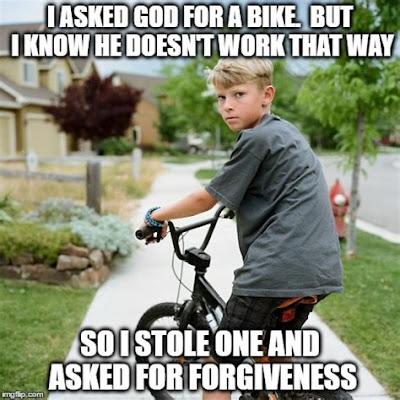Yesterday, I wrote about how a beloved member of his cycling community is being commemorated: The University of Texas at San Antonio opened the Tito Bradshaw Bicycle Repair Shop in a former information booth.
The reason why he's being commemorated is, unfortunately, terrible: He was killed by an intoxicated driver while riding his bike.
Sometimes, it seems, it takes the death of a cyclist or pedestrian to bring the issue home and spur people into action--that is, when someone isn't trying to blame the cyclist, or cyclists in general, even if the driver was drunk, high, distracted or driving with a suspended license (or no license at all).
For Chesley Ann Epley Cobbs (Does that sound like a Southern name, or what?), the issue of safety came home, literally, when her brother was killed while riding his bicycle in Oklahoma City.
As personal as the issue is for her, she made the point that cyclists' safety is vital to the redevelopment of her city. "Having safe and protected bike lanes connecting our downtown communities secures the safety of getting to and from those places of well-being and entertainment that you are working so hard to build and elevate our great state," she said in a hearing at City Hall.
She found a receptive audience in at least two City Council members. One, Jo Beth Hamon, described rides that "should take minutes" but take much longer because "going through the neighborhoods, there was no connection" between bike lanes. As a result, she had to cross major thoroughfares, including a highway, to take what is a typical days' ride for her.
Another Council Member, James Cooper, connected the safety of cyclists and pedestrians to the overall livability of the city. In addition to a lack of cycling infrastructure, he said that sidewalks are unsafe "in even our most walkable neighborhood, award-winning neighborhood." He wondered how "a child" could "get safely to school, to a park" in the conditions he described.
The Council members and Ms. Epley Cobbs spoke at a public proposal meeting on how to spend public funding earmarked for public facilities. I hope that others in the decision-making process--in other places as well as Oklahoma City--understand what Ms. Epley Cobbs, Ms. Hamon and Mr. Cooper are trying to say: Ensuring the safety of people who get around without motor vehicles is a vital part of a modern city's development, or redevelopment.
The reason why he's being commemorated is, unfortunately, terrible: He was killed by an intoxicated driver while riding his bike.
Sometimes, it seems, it takes the death of a cyclist or pedestrian to bring the issue home and spur people into action--that is, when someone isn't trying to blame the cyclist, or cyclists in general, even if the driver was drunk, high, distracted or driving with a suspended license (or no license at all).
For Chesley Ann Epley Cobbs (Does that sound like a Southern name, or what?), the issue of safety came home, literally, when her brother was killed while riding his bicycle in Oklahoma City.
As personal as the issue is for her, she made the point that cyclists' safety is vital to the redevelopment of her city. "Having safe and protected bike lanes connecting our downtown communities secures the safety of getting to and from those places of well-being and entertainment that you are working so hard to build and elevate our great state," she said in a hearing at City Hall.
She found a receptive audience in at least two City Council members. One, Jo Beth Hamon, described rides that "should take minutes" but take much longer because "going through the neighborhoods, there was no connection" between bike lanes. As a result, she had to cross major thoroughfares, including a highway, to take what is a typical days' ride for her.
Another Council Member, James Cooper, connected the safety of cyclists and pedestrians to the overall livability of the city. In addition to a lack of cycling infrastructure, he said that sidewalks are unsafe "in even our most walkable neighborhood, award-winning neighborhood." He wondered how "a child" could "get safely to school, to a park" in the conditions he described.
| Add caption |
The Council members and Ms. Epley Cobbs spoke at a public proposal meeting on how to spend public funding earmarked for public facilities. I hope that others in the decision-making process--in other places as well as Oklahoma City--understand what Ms. Epley Cobbs, Ms. Hamon and Mr. Cooper are trying to say: Ensuring the safety of people who get around without motor vehicles is a vital part of a modern city's development, or redevelopment.






















